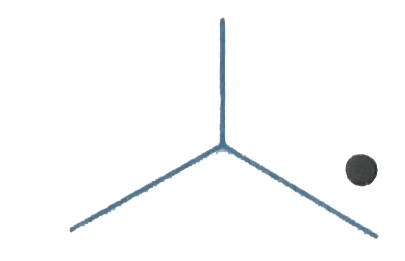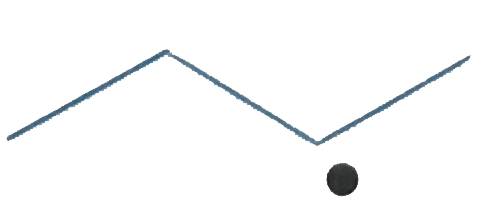Write hydrocarbon radicals that can be formed as intermediates during monochlorination of 2-methylpropane ? Which of them is more stable? Give reasons.
Video Solution
Text Solution
2- Methylpropane has two sets of equivalent hydrogens marked as a and b and therefore, gives two radicals I and II
CH3−CH3∣C⋅I−CH3←aCH3−aCH3∣bCH−aCH3→CH3−CH3∣CH−⋅CH2II
Radical I is more stable than radical II because it is tertiary while radical II is primary. It is also stabilized due to hyperconjugation (nine structures).
|
Updated on:21/07/2023
Topper's Solved these Questions
- BOOK - MODERN PUBLICATIONCHAPTER - HYDROCARBONSEXERCISE - NCERT FILE (NCERT EXEMPLAR PROBLEMS) (MATCH TYPE QUESTIONS)4videos
HYDROCARBONS
- BOOK - MODERN PUBLICATIONCHAPTER - HYDROCARBONSEXERCISE - NCERT FILE (NCERT EXEMPLAR PROBLEMS) (Assertion and Reason Type Questions)3videos
HYDROCARBONS
- BOOK - MODERN PUBLICATIONCHAPTER - HYDROCARBONSEXERCISE - NCERT FILE (NCERT EXEMPLAR PROBLEMS) (Multiple Choice Questions (Type-II))9videos
HYDROCARBONS
- BOOK - MODERN PUBLICATIONCHAPTER - HALOALKANES AND HALOARENESEXERCISE - UNIT PRACTICE TEST12videos
HALOALKANES AND HALOARENES
- BOOK - MODERN PUBLICATIONCHAPTER - HYDROGENEXERCISE - UNIT PRACTICE TEST (for Board Examination)9videos
HYDROGEN
Similar Questions
Knowledge Check
- Question 1 - Select One
More stable intermediate obtained monochlorination of 2-methyl propane is
A B
B C
C Dall are equally stable
Dall are equally stable - Question 2 - Select One
Which form is more stable in the shown case -
 AIBIICI=IIDII>I
AIBIICI=IIDII>I - Question 3 - Select One or More
Monochlorination of (S)-2-chlorobutane can give:
A(S)-1,2-dichlorobutanceB(R)−1,2−dichlorobutaneC(2R,3S)-2,3-dichlorobutaneD(2R,3R)-2,3-dichlorobutane
The number of enantiomeric paris that can be product during monochlorination Of 2- mehtybutane is :
View SolutionThe number of possible enantiomeric pairs that can be produced during monochlorination of 2-methylbutane is:
View SolutionThe number of possibel enantiomeric paira that can be produced during monochlorination of 2-methyl butane is :
View SolutionThe number of possible enantiomeric pairs that can be produced during monochlorination of 2-methyl butane is
View SolutionThe number of possible enantiomeric pairs that can be produced during monochlorination of 2-methyl butane is
View Solution

